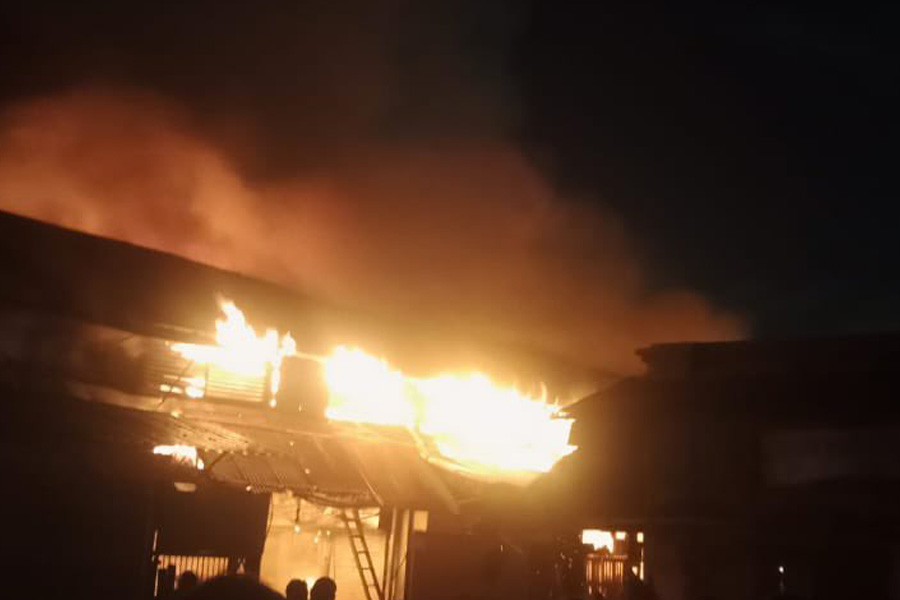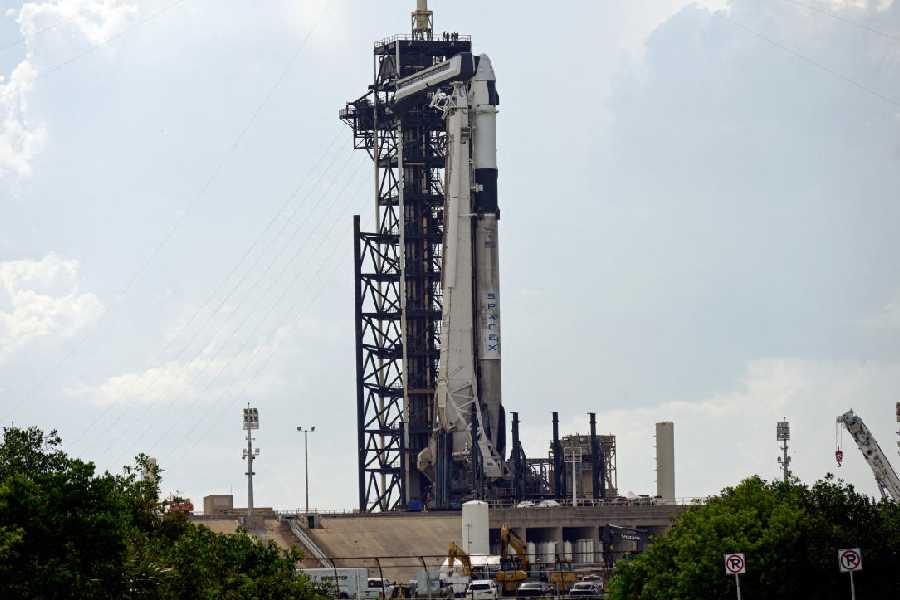 |
Microscopic fossils embedded in ancient rocks in Rajamundhry in Andhra Pradesh are now telling a tale that palaeontologist Dhananjay Mohabey had unearthed from rocks scattered across India’s Deccan plateau six years ago.
Mohabey, director of palaeontology at the Geological Survey of India (GSI), Nagpur, had conducted extensive chemical and magnetic studies on the rocks to argue in favour of an old but as yet unsettled hypothesis that it was a prolonged spell of volcanic eruptions in India that had wiped out the dinosaurs — and not a rock from outer space.
The Rajamundhry microfossils are now providing what scientists believe is the strongest proof yet that India’s volcanoes were responsible for the mass extinction of species that occurred about 65 million years ago. The fossils show with almost pinpoint precision that the event took place near the end of a series of massive volcanic eruptions in western India that created the Deccan trap lava beds, says a team of scientists from India, Switzerland and the US.
Deccan volcanism is now a leading contender as a cause of the extinction, the scientists have said in their presentation to the Geological Society of America. “It’s the first time we can directly link the main phase of Deccan volcanism to the extinction,” said Princeton University palaeontologist and team member Gerta Keller.
The fossils belong to organisms called planktonic foraminifera that are known to have evolved immediately after the mass extinction. “Their position in the volcanic pile tells us that the biggest phase of the volcanic eruptions had already ended by the time these organisms began to appear,” Sunil Bajpai, a team member from the Indian Institute of Technology, Roorkee, told KnowHow.
Scientists have known for decades that Deccan volcanism occurred around the same time as the mass extinction, and geologists in the past have touted the eruptions as a possible cause of the extinction.
These ideas challenged the prevailing theory that an asteroid struck Chicxulub in Mexico 65 million years ago and kicked up colossal amounts of dust and gases that altered the atmosphere, blocked sunlight for months and caused the extinction.
The new study by Keller, Bajpai and their colleague Theirry Adatte from the University of Neuchatel, Switzerland, has helped them pinpoint — on a geological timescale — the time of the extinction and the eruption.
The foraminifera fossils were found in nine metres of marine sediments trapped in layers of lava rocks in basalt quarries in Duddukuru village near Rajamundhry. In an effort supported by Discovery Channel, Keller and Bajpai will begin drilling operations in Rajamundhry in January 2008 to explore fossils buried even deeper under the volcanic rocks.
“We’re hoping deeper fossils will reveal the pattern of extinction and tell us something about when exactly the volcanic activity began,” Bajpai said.
Earlier studies have also indicated that Deccan volcanism was far more devastating than the asteroid impact in Chicxulub. The main phase of the eruptions is estimated to have released 10 times more climate-changing gases than the Chicxulub asteroid.
Keller’s work had earlier indicated that the Chicxulub impact occurred about 300,000 years before the extinction. This gap posed a problem. Now the researchers have shown that the end of the Deccan eruptions coincides with the extinction.
The scale of the Deccan eruptions is evident from the vast spread of solidified volcanic basalt which is up to three kilometres thick near the town of Mahabaleshwar in Maharashtra and stretches all the way into Andhra Pradesh where it is thinner, covering nearly 500,000 square kilometres of area.
However, the cause of the Deccan eruptions remains an unsolved puzzle in Earth’s history. A research team at the National Geophysical Research Institute (NGRI) in Hyderabad in the early-1990s had proposed that an asteroid might have struck a point just off the coast of present-day Mumbai, unleashing the outpouring of lava. More recently, palaeontologist Sankar Chatterjee at the Texas Tech University, US, analysed data collected previously by NGRI scientists as well as geologists with the Oil and Natural Gas Commission to build up an argument for such an asteroid impact near Mumbai.
In independent studies, Chatterjee and the NGRI teams have proposed that the two events thus worked in unison to wipe out the dinosaurs and other creatures to pave the way for the rise of mammals.
Previous geological studies have indicated that the Deccan volcanism lasted from 69 million years to 61 million years. “What the new study from Rajamundhry does is fine-tune the dates,” said GSI’s Mohabey. In studies of magnetism and chemical analysis of rocks conducted between 1998 and 2004, Mohabey had shown that the demise of the dinosaurs had occurred during the Deccan volcanism.
Next year, he hopes to join Bajpai and Keller in drilling through 200-metres of the volcanic rocks in Rajamundhry. Beneath these volcanic layers, the scientists are hoping, lie fossils of creatures that predated the Deccan volcanic eruptions.











